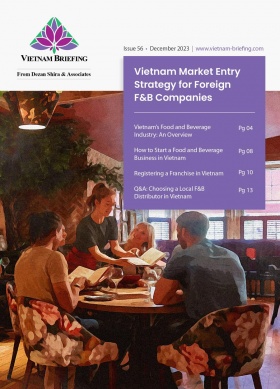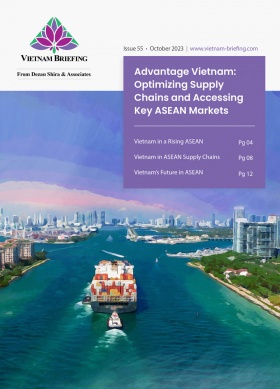EU Updates Food Safety Measures for Vietnam Agrifood Exports
We note the updated EU food safety regulations as of June 2024, impacting Vietnam’s agrifood exports, including instant noodles and farm produce, along with a list of best practices.
From July 2, the European Union (EU) will exempt Vietnam’s instant noodles from food safety control, although a 20 percent inspection frequency at border gates will still apply.
Additionally, the EU is adjusting inspection regulations for other Vietnamese agricultural products, including dragon fruits, chili peppers, okra, and durian.
This article offers businesses the latest updates on EU regulations regarding Vietnam’s agricultural and processed food exports, food safety control measures, and an overview of Vietnam’s agrifood exports to the EU.
EU regulatory update for agricultural product imports – June 2024
On June 11, the EU released the Commission Implementing Regulation 2024/1662, which includes an exemption for Vietnam’s instant noodles from stringent food safety controls. This new regulation amends Implementing Regulation (EU) 2019/1793, which pertains to the temporary increase of official controls and emergency measures for the entry of certain goods from specific third countries, in accordance with Regulations (EU) 2017/625 and (EC) No 178/2002 of the European Parliament and the Council.
Previously, the EU had previously placed Vietnam’s instant noodles under food safety control, with a 20 percent border inspection frequency, due to the ethylene oxide residue found in the products exceeding the EU regulatory threshold.
Additionally, the EU has adjusted inspection regulations for other farm produce from Vietnam:
- Dragon fruits: The inspection frequency at the border shall increase from 20 percent to 30 percent.
- Chili peppers: Moved from Annex I, which has a 50 percent inspection frequency, to Annex II, which maintains the 50 percent inspection frequency but also requires food safety certificates and test results for pesticide residues in the produce.
- Okras: Remain at a 50 percent inspection frequency and require food safety certificates and test results for pesticide residues in the produce.
- Durians: Maintain an inspection frequency of 10 percent.
Further, during the transition period, Vietnam’s chilli peppers dispatched from the country or a third country before the effective date of the Commission Implementing Regulation (EU) 2024/1662 may enter the EU until September 2, 2024, without the requirement of sampling and analysis results and the official certificate provided for in Articles 10 and 11.
Read more: Vietnam’s Agrifood Export Potential: Key Guidelines for Trade Businesses
Food safety control regulations for Vietnam exporters
According to Ngo Xuan Nam, the deputy director of Viet Nam Sanitary and Phytosanitary Notification Authority and Enquiry Point (SPS Office), agrifood producers must comply with EU market regulations in order to export to the EU. The regulations are on:
- Business list registration;
- Maximum allowable residue levels (MRL) for products of plant origin;
- Antibiotic residue levels for products of animal origin;
- Food additives;
- Materials in contact with food;
- Mixed products;
- Disease-free zones;
- Ensuring food safety;
- Traceability for processing facilities;
- Illegal, unreported and unregulated fishing (IUU);
- EU Deforestation Regulation (EUDR); and
- Other related regulations.
The EU divides imported agrifood products into low-risk and high-risk categories. While systematic border controls are not applied to low-risk products, high-risk products are subject to a range of control measures.
Moreover, exporters should refer to the EU’s new regulation document for the list of agrifood products with control measures for high-risk products:
- Annex I is for food and feed of non-animal origin from certain third countries subject to a temporary increase of official controls at border control posts and control points; and
- Annex II is for food and feed from certain third countries subject to special conditions for the entry into the EU due to contamination risk by mycotoxins, including aflatoxins, pesticide residues, microbiological contamination, Sudan dyes, Rhodamine B, and plant toxins.
Assistance from the Vietnam SPS Office for exporters
According to the Vietnam SPS deputy director, the SPS Office receives about 100 notices and drafts monthly on changes to SPS (sanitary and phytosanitary) measures, including drafts on changes to residue levels of pesticides and veterinary drugs, quarantine subjects, and regulations on materials in contact with products.
The Vietnam SPS Office promptly updates the country’s competent agencies, localities, and industry associations with these notifications. Tracking these updates assist firms in production management, quality control, and compliance with market regulations.
Exporting an agrifood product into a highly standardized market like the EU can be challenging for any business, particularly if they intend to expand to higher value markets beyond their traditional realm of focus. Staying constantly updated with the latest regulations is essential for agrifood businesses to maintain their company brand value. Successfully meeting market standards can also positively influence consumer perceptions of the country of origin.
In a broader context, a collective effort from exporters and producers will help address the risk of increased inspection frequency and potential temporary suspension of imports into the EU, thereby enhancing the credibility of Vietnam’s exports.
Directions for Vietnamese agricultural products from the Ministry of Industry and Trade (MIT)
The Vietnam Institute of Industrial and Trade Policy and Strategy (VIOIT) under the MIT indicates two main directions for the agricultural products of Vietnam:
- The development of Vietnamese agricultural products focuses on being associated with quality, hygiene, and food safety standards according to strict EU standards. Vietnam’s government requires businesses to modernize the processing of agricultural products, which is highlighted in Resolution No. 53/NQCP on measures to encourage and facilitate businesses to invest in agriculture in an effective, safe, and sustainable manner.
- Applying traceability technology to agricultural products’ cultivation, production, and processing. Traceability enables consumers to trace back product information upstream and learn about every stage in processing and distribution. By adopting the technology, enterprises can better integrate into the international market for high-quality products.
EU market potential for agrifood exports from Vietnam
The EU is a prominent market for Vietnam’s exports, particularly in the agricultural and food sectors, and there is still room for more distribution.
Quick facts about the EU:
- Twenty-seven member states;
- Over 448 million people in total population as of January 1, 2023; and
- GDP per inhabitant averaged €35 220 ( US$37,813) among member states in 2022 (€1 = US$1.0734).
According to VIOIT, Vietnam’s agricultural exports to the EU market currently reach around US$5.5 billion annually, making up 15 percent of the total value of Vietnam’s agricultural products. After China and the US, the EU is the third-largest market for Vietnam’s exported agricultural products.
Despite the growth in two-way trade in recent years, products from Vietnam account for a modest 4 percent of the EU’s agricultural imports market. Given the EU’s agricultural product imports is valued at around US$160 billion per year, this presents a huge potential for Vietnam’s agrifood exporters.
After the European Union-Vietnam Free Trade Agreement (EVFTA) came into effect on August 1, 2020, the EU implemented 0 percent duties on about 94 percent of the total 547 tariff lines for fresh and processed vegetables and fruits from Vietnam. This provides a competitive edge for Vietnam’s exports compared with those of its Asian neighbors like Thailand and China since the two countries do not have a free trade agreement with the EU.
Conclusion
The EU market has great potential for Vietnam’s agricultural exports and presents a unique opportunity for Vietnam’s producers and exporters to level up their expertise and competitiveness. While Vietnam’s exports to the EU enjoy advantages under the EVFTA, the agreement mandates that the country’s exporters swiftly update and comply with the EU’s high market standards and regulations.
About Us
Vietnam Briefing is one of five regional publications under the Asia Briefing brand. It is supported by Dezan Shira & Associates, a pan-Asia, multi-disciplinary professional services firm that assists foreign investors throughout Asia, including through offices in Hanoi, Ho Chi Minh City, and Da Nang in Vietnam. Dezan Shira & Associates also maintains offices or has alliance partners assisting foreign investors in China, Hong Kong SAR, Indonesia, Singapore, Malaysia, Mongolia, Dubai (UAE), Japan, South Korea, Nepal, The Philippines, Sri Lanka, Thailand, Italy, Germany, Bangladesh, Australia, United States, and United Kingdom and Ireland.
For a complimentary subscription to Vietnam Briefing’s content products, please click here. For support with establishing a business in Vietnam or for assistance in analyzing and entering markets, please contact the firm at vietnam@dezshira.com or visit us at www.dezshira.com
- Previous Article HCMC Announces Labor and Employment Strategy Through 2025: Key Goals
- Next Article Vietnam Government Extends Tax and Land Rental Payment Deadlines in 2024








